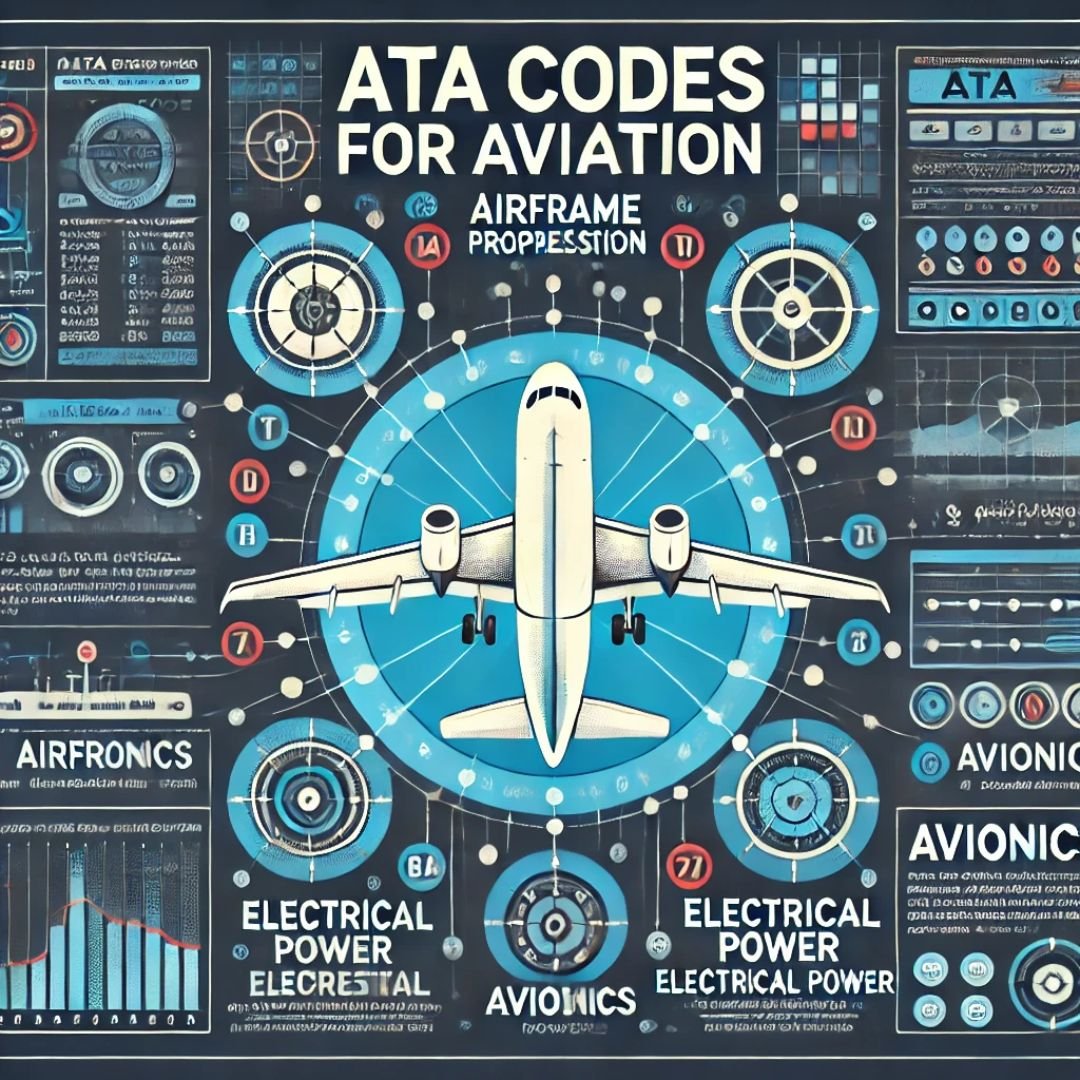The aviation industry uses a universal system for managing, maintaining, and repairing aircraft. Among the various codes developed by the Air Transport Association (ATA), ATA codes play a significant role. They standardize maintenance documentation and communication procedures across the aviation sector. Being an engineer, technician, or aviation enthusiast, understanding the ata codes list for aircraft is essential for moving through the labyrinth of aviation maintenance.
What Are ATA Codes?
The standardized numbering systems, also known as ATA codes or ATA chapters, help identify and organize aircraft systems, components, and maintenance tasks.
- Purpose: This purpose is applied towards simplifying documentation, communication, and efficiency in aircraft maintenance.
- Structure: ATA codes typically consist of two or three digits representing specific systems or components of an aircraft.
Importance of ATA Codes in Aviation
ATA codes are indispensable in aviation maintenance for several reasons:
- Uniformity: They create a standardized language for maintenance personnel worldwide.
- Efficiency: Maintenance manuals are easier to navigate, reducing downtime during repairs.
- Accuracy: They minimize the risk of miscommunication and errors in maintenance tasks.
How Are ATA Codes Structured?
ATA codes follow a hierarchical structure:
- Chapter: The main system or area of the aircraft (e.g., ATA 21 for Air Conditioning).
- Section: A subcategory within the chapter (e.g., ATA 21-10 for air conditioning distribution).
- Subsection: Specific components or tasks (e.g., ATA 21-10-00 for general air conditioning distribution).
This modular structure allows technicians to pinpoint and address specific issues efficiently.
ATA Codes List for Aircraft: Key Categories
Here’s a breakdown of some of the most common ATA chapters and their significance:
1. ATA 21 – Air Conditioning
This chapter covers the systems for maintaining cabin air quality and temperature control.
- Includes air circulation, cooling systems, and pressurization.
- Critical for ensuring passenger comfort and preventing equipment overheating.
2. ATA 22 – Auto Flight
Focuses on automated flight control systems like autopilot and auto-throttle.
- Ensures safe and efficient flight operations.
- Frequently updated to incorporate advancements in automation technology.
3. ATA 23 – Communications
Addresses systems enabling communication between the cockpit, ground, and passengers.
- Includes radios, intercoms, and passenger address systems.
- Essential for ensuring safety and regulatory compliance.
4. ATA 24 – Electrical Power
This chapter deals with generating, distributing, and storing electrical power.
- Covers batteries, alternators, and circuit breakers.
- Ensures uninterrupted power supply to all systems.
5. ATA 25 – Equipment and Furnishings
Focuses on interior components like seats, overhead bins, and lavatories.
- Enhances passenger comfort and safety.
- Regularly inspected to maintain aesthetic and functional standards.
6. ATA 27 – Flight Controls
It covers systems that control the aircraft's movement, such as ailerons, elevators, and rudders.
- Critical for maneuverability and stability.
- Regular maintenance ensures precise operation.
7. ATA 28 – Fuel
Deals with the storage, distribution, and monitoring of fuel.
- Includes fuel tanks, pumps, and gauges.
- It prevents fuel leaks and ensures efficient engine performance.
8. ATA 29 – Hydraulic Power
Addresses the hydraulic systems responsible for operating flight controls, landing gear, and brakes.
- Includes pumps, reservoirs, and actuators.
- Essential for smooth and reliable aircraft operations.
9. ATA 32 – Landing Gear
Focuses on the mechanisms involved in landing and taxiing.
- Includes wheels, brakes, and struts.
- Requires frequent inspection to ensure safe landings.
10. ATA 49 – Auxiliary Power Unit (APU)
This chapter covers the small engine that provides power for systems when the main engines are off.
- Used during ground operations and emergencies.
- Critical for maintaining auxiliary systems and reducing fuel consumption.
Benefits of Using ATA Codes
- Streamlined Maintenance Processes
Technicians can quickly identify and locate systems or components, reducing time spent on diagnostics and repairs.
- Enhanced Training and Documentation
ATA codes are a fundamental part of aviation training programs, ensuring consistency across the industry.
- Regulatory Compliance
Using ATA codes ensures adherence to international aviation standards, minimizing the risk of penalties or operational delays.
- Improved Communication
The standardized format facilitates communication between manufacturers, airlines, and maintenance teams.
- Cost Savings
Efficient maintenance processes lower labor costs and reduce aircraft downtime, resulting in significant operator savings.
How to Learn ATA Codes
If you’re new to aviation, understanding ATA codes may seem daunting. Here are some tips to master them:
- Enrol in Training Programs: Aviation schools and online platforms offer courses on ATA codes and their applications.
- Use Maintenance Manuals: Familiarize yourself with technical manuals that use ATA codes extensively.
- Practice Regularly: The more you work with ATA codes, the more intuitive they become.
Technology Advancements in ATA Code Management
Modern software tools have revolutionized the way ATA codes are used:
- Digital Maintenance Systems: Aircraft maintenance platforms use ATA codes for real-time diagnostics and task assignments.
- Mobile Applications: Technicians can access ATA code information on handheld devices, improving on-site efficiency.
- Integration with AI: Artificial intelligence streamlines data analysis, predicting maintenance needs based on ATA code patterns.
Conclusion
Understanding the ATA codes list for aircraft is vital for anyone in the aviation industry. These codes simplify maintenance, enhance communication, and ensure safety across all operations. As technology evolves, the integration of ATA codes with advanced systems will continue to optimize aviation processes.
Visit Power Air Consulting for expert guidance on aircraft maintenance solutions. Our extensive knowledge of ATA codes and aviation systems ensures top-tier support for your aviation needs.

